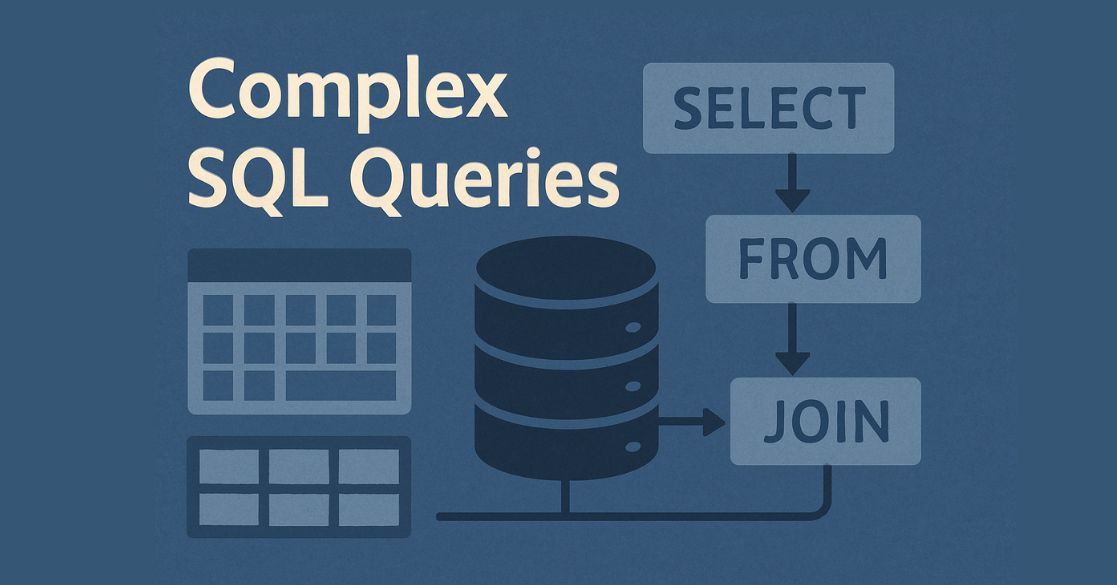Ajax uses several web technologies on the client-side to create an asynchronous web application. With the help of Ajax, web applications can send and retrieve with no interruption to the display of the data on the existing page. Ajax developers are responsible for creating web applications that are responsive and interactive. They use a variety of technologies, including Ajax, HTML, CSS, and JavaScript, to create web applications that can be used on any device.
Wish to build your Ajax career? This is the perfect blog post for you. We will discuss the top 38 Ajax interview questions and answers that will help you ace your interview process and progress in your career.
Here are the commonly asked Ajax Interview Questions that you must keep in mind in no particular order.
- What is Ajax?
- What are the different technologies used in AJAX?
- What is a synchronous request in AJAX?
- How is Ajax different?
- Are Ajax applications easier to develop than traditional Web Applications?
- Do Ajax applications always deliver a better experience than traditional Web Applications?
- Does Ajax work with another language?
- What is an asynchronous request in AJAX?
- Won't my Server-aspect Framework provide me with Ajax?
- Did adaptive path invent Ajax? Did adaptive path help build Google's Ajax Applications?
Let's get started.
Table of Contents
Ajax Interview Questions
Here is a list of the top Ajax Interview Questions to help attend your upcoming interview with confidence.
1. What is Ajax?
Ajax isn’t a generation. It’s numerous technologies, every flourishing in its personal proper, coming collectively in effective new ways. Ajax incorporates:
- Requirements-primarily based totally presentation the use of XHTML and CSS;
- Asynchronous records retrieval the use of XMLHttpRequest;
- JavaScript binding the whole lot collectively.
- Dynamic show and interplay the use of the Document Object Model;
- Records interchange and manipulation the use of XML and XSLT;
AJAX (Asynchronous JavaScript and XML) is a newly coined time period for 2 effective browser functions which have been around for years however had been unnoticed through many net builders till currently whilst programs inclusive of Gmail, Google Suggest, and Google Maps hit the streets. Check out the free ajax course.
2. What are the different technologies used in AJAX?
AJAX involves different technologies such as HTML (and XHTML), CSS (for presentation layer), JSON, XML or XSLT (for data exchange between a web server and client), JavaScript and other APIs for asynchronous communication. AJAX is used for creating dynamic web pages. Examples of the websites that use AJAX are Google, Gmail, YouTube, Facebook etc. AJAX is a standard based on Internet Standards to comply with all the browsers and networks across the globe.
3. What is a synchronous request in AJAX?
The synchronous and Asynchronous type requests in AJAX are used based on the request priority of the web server request. They should be carefully configured to make the server respond to the user based on the user requirement. The synchronous request waits for the server’s response after requesting to proceed with the next part of the script execution, which is crucial in a fast response mechanism. This should be avoided frequently to make the server highly responsive. Wherever the synchronous request mechanism is essential or inevitable, it should be used.
4. How is Ajax different?
An Ajax utility removes the begin-forestall-begin-forestall nature of interplay at the Web by introducing an intermediary — an Ajax engine — between the person and the server. It looks like including a layer to the utility could make it much less responsive. However, the contrary is true.
The synchronous interplay sample of a conventional net utility (pinnacle) compares with the asynchronous sample of an Ajax utility (bottom).
Instead of loading a webpage, at the beginning of the consultation, the browser sends an Ajax engine — written in JavaScript and commonly tucked away in a hidden frame. This engine is accountable for each rendering of the interface the person sees and speaking with the server on the person’s behalf. The Ajax engine permits the person’s interplay with the utility to appear asynchronously — impartial of conversation with the server. So the person is by no means looking at a clean browser window and an hourglass icon, ready round for the server to do something.
5. Are Ajax applications easier to develop than traditional Web Applications?
Not necessarily. Ajax programs necessarily contain walking complicated JavaScript code at the consumer. Making that complicated code green and bug-loose isn't always a mission to be taken lightly, and higher improvement equipment and frameworks may be hard to assist us to meet that challenge.
6. Do Ajax applications always deliver a better experience than traditional Web Applications?
Not necessarily. Ajax offers interplay designers extra flexibility. However, the extra electricity we've, the extra warning we ought to use in exercising it. We ought to be cautious about applying Ajax to beautify the person revel in our programs, now no longer degrade it.
7. Does Ajax work with another language?
Absolutely. Java is a top-notch suit for AJAX! You can use Java Enterprise Edition servers to generate AJAX consumer pages and to serve incoming AJAX requests, manipulate server-aspect nations for AJAX customers, and join AJAX customers for your corporation resources. The JavaServer Faces aspect version is a top-notch suit for outlining and the use of AJAX additives.
8. What is an asynchronous request in AJAX?
An Asynchronous request is defined as the script execution which allows proceeding with the next line of execution irrespective of the response from the web server after a request, which can be handled later upon the receipt of the response from the web server. Asynchronous is the most important mechanism in responding to the user without any delay where a user can still interact with the web pages irrespective of the responses from the server for the previous requests.
9. Won't my Server-aspect Framework provide me with Ajax?
You can be taking advantage of AJAX already. Many present Java-primarily based frameworks have already got a few degrees of AJAX interactions, and new frameworks and aspect libraries are being advanced to offer higher AJAX guidance. I may not list all of the Java frameworks that use AJAX right here, out of worry of lacking someone. However, you could discover a true listing at www.ajaxpatterns.org/Java_Ajax_Frameworks.
10. Did adaptive path invent Ajax? Did adaptive path help build Google's Ajax Applications?
If you haven't selected a framework, but it's encouraged, don't forget to use JavaServer Faces or a JavaServer Faces-primarily based framework. JavaServer Faces additives may be created and used to summarise most of the information of producing JavaScript, AJAX interactions and therefore allow easy AJAX utilized by JSF utility builders plug-ins in JSF well suited IDE's, inclusive of Sun Java Studio Creator.
Neither Adaptive Path nor Google invented Ajax. Google's current merchandise is the highest-profile example of Ajax programs. Adaptive Path changed into now no longer worried withinside the improvement of Google's Ajax programs. However, we were doing Ajax paintings for a number of our different customers.
11. Is it possible to set session variables from Javascript?
No, It's now no longer viable to set any consultation variables without delay from javascript as it's merely a consumer-aspect generation. You can use AJAX even though it is asynchronous.
12. Explain what is polling in AJAX.
The process of retrieving data from a server to obtain near-live data regularly is called AJAX polling.
13. What do you need to know to create my own Ajax Functionality?
If you propose now no longer to reuse a present AJAX aspect, right here are a number of the matters you may want to recognize.
JavaScript: JavaScript is a loosely typed item-primarily based scripting language supported through all foremost browsers and crucial for AJAX interactions. JavaScript in a web page is referred to as whilst an occasion in a web page happens inclusive of a web page load, a mouse click, or a keypress in a shape element.
Plan to research Dynamic HTML (DHTML), the generation this is the inspiration for AJAX. DHTML permits browser-primarily based real-time interplay between a person and an internet web page. DHTML is the aggregate of JavaScript, the Document Object Model (DOM), and Cascading Style Sheets (CSS).
DOM: An API for getting access to and manipulating established documents. In maximum instances, DOM represents the shape of XML and HTML documents.
CSS: This permits you to outline the presentation of a web page inclusive of fonts, colours, sizes, and positioning. CSS permits a clean separation of the presentation from the content material and can be modified programmatically through JavaScript.
Understanding the simple request/reaction nature of HTTP is likewise critical. Many diffused insects can result in case you forget about the variations among the GET and OIst techniques whilst configuring XMLHttpRequest and HTTP reaction codes whilst processing callbacks.
JavaScript is the consumer-aspect glue, in a sense. JavaScript is used to create the XMLHttpRequest Object and cause the asynchronous name. JavaScript is used to parse the back content material. JavaScript is used to investigate the back records and system back messages. JavaScript is used to inject the brand new content material into the HTML using the DOM API and to adjust the CSS.
14. What Javascript Libraries and Frameworks are available?
Three true libraries are The Dojo Toolkit, Prototype, and DWR.
The Dojo Toolkit includes APIs and widgets to guide the improvement of wealthy net programs. Dojo includes a smart packaging gadget, UI results, drag and drops APIs, widget APIs, occasion abstraction, consumer garage APIs, and AJAX interplay APIs. Dojo solves not unusual place usability problems inclusive of guide for handling the navigation inclusive of the cap potential to hit upon the browser again button, the cap potential to guide modifications to the URL withinside the URL bar for bookmarking, and the cap potential to gracefully degrade whilst AJAX/JavaScript isn't always absolutely supported at the consumer. The dojo is the Swiss Army Knife of JavaScript libraries. It gives the widest variety of alternatives in an unmarried library, and it does a superb activity helping new and older browsers.
The Prototype specializes in AJAX interactions inclusive of a JavaScript AJAX item that includes some items to do simple duties including making a request, replacing a part of a file, insert content material right into a file, and replacing a part of a file periodically. Prototype JavaScript library includes a fixed set of JavaScript items for representing AJAX requests and includes application features for getting access to web page additives and DOM manipulations. Script.aculo.us and Rico are constructed on the pinnacle of Prototype and offer UI results, a guide for drag and drop, and consist of not unusual places. JavaScript-centric widgets. If you're simply seeking to guide AJAX interactions and some simple duties, Prototype is top-notch. If you're seeking out UI results, Rico and Script.aculo.us are true alternatives.
DWR (Dynamic Web Remoting) is a consumer-aspect and server-aspect framework specialising in permitting a developer to do RPC calls from consumer-aspect JavaScript to standard vintage Java items in a Java Enterprise Edition net container. On the server-aspect, DWR makes use of a Servlet to have interaction with the Java items and returns item representations of the Java items or XML documents. DWR may be clean to arise and walk and perform nicely with different Java technology. If you're seeking out a consumer-aspect and server-aspect framework that integrates nicely, use DWR.
There are many new and rising libraries for JavaScript, and this listing best evaluations a number of the extra not unusual place libraries. When creating a preference, pick the library which fits your desires and the quality. While it is probably better to pick one, not anything is preventing you from using a couple of frameworks. For an extra-large listing of consumer-aspect frameworks, see Survey of AJAX/JavaScript Libraries.
15. What is the difference between Proxied and Proxyless Calls?
Proxied calls are made thru stub items that mimic your PHP training at the JavaScript aspect. E.g., the HelloWorld magnificence from the Hello World instance.
Proxyless calls are made using application javascript features like HTML_AJAX.replace() and HTML_AJAX.append().
16. Should I use Xml or Text, Javascript, or Html as a Return Type?
It depends. The 'X' in AJAX stands for XML, however numerous AJAX proponents are short to factor out that not anything in AJAX, in keeping with se, precludes the use of different varieties of payload, inclusive of JavaScript, HTML, or simple textual content.
HTML - Injecting server-generated HTML fragments without delay right into a file is usually a completely powerful AJAX technique. However, it is able to be complex to maintain the server-aspect aspect in sync with what's displayed at the consumer.
XML - Web Services and AJAX appear made for one any other. You can use consumer-aspect API for downloading and parsing the XML content material from RESTful Web Services. (However bear in mind with a few SOAP-primarily based totally Web Services architectures the payloads can get pretty massive and complicated, and consequently can be irrelevant with AJAX strategies.)
Plain Text - In this case, server-generated textual content can be injected right into a file or evaluated through consumer-aspect common sense.
JavaScript - This is an extension to the apparent textual content case with the exception that a server-aspect aspect passes a fraction of JavaScript inclusive of JavaScript item declarations. Using the JavaScript eval() feature you could then create the items at the consumer. JavaScript Object Notation (JSON), that's a JavaScript item-primarily based totally records trade specification, is based on this technique.
17. Are there usability issues with Ajax?
A person may pick to apply the browser's again or ahead buttons, bookmark a web page, reproduce the URL from the URL bar and percentage it with a chum thru an email or chat consumer, or print a web page at any given time. When designing an AJAX-primarily based totally utility, you want to don't forget what the predicted conduct could be withinside the case of navigation, bookmarking, printing, and browser guide as defined underneath.
Navigation - While you can put into effect records manipulation manually it can be less complicated to apply JavaScript frameworks inclusive of Dojo that offer API's records manipulation and navigation manipulation.
Bookmarking and URL sharing - Many customers need to bookmark or reduce and paste the URL from the browser bar.
Printing - In a few instances printing dynamically rendered pages may be elaborate.
Other issues as a developer whilst the use of AJAX are:
Browser Support - Not all AJAX/DHTML functions are supported on all browsers or all variations of a browser. See quirksmode.org for a listing of browser guides and viable workarounds.
JavaScript disabled - You need to additionally don't forget what occurs if the person disables JavaScript. Additionally, there are numerous valid reasons why JavaScript and CSS guides can be unavailable on a person's net browser.
Latency - Keep in mind latency to your layout. A walking utility may be lots extra responsive than whilst it's far deployed. Latency troubles: delusion or reality?
Accessibility - Degradability is the time period used to explain strategies utilized by net programs to evolve to the huge variety of net browser capabilities. Many AJAX libraries have computerized degradability integrated. But in case you are coding your personal custom AJAX capability, clearly taking a few cares to comply with the quality practices promoted through requirements our bodies just like the World Wide Web Consortium (W3C), and grass-roots actions just like the Web Standards network and lots of others, your utility can run usefully on browsers which can be incapable of AJAX behaviours. Granted, your utility might also additionally lose a number of the "wow factor" on those much less successful browsers. However, your utility will nevertheless be useful.
Remember to now no longer layout with AJAX only for the sake of coolness. The cause you constructed your utility is so human beings will use it. And human beings will now no longer use your utility in case your utility isn't always well suited with their net browser.
18. Are there any Frameworks available to help Speedup Development with Ajax?
There are numerous browser-aspect frameworks available.
19. Should I use an Http get or Post for my Ajax Calls?
AJAX requests need to use an HTTP GET request whilst retrieving records wherein the records will now no longer extrude for a given request URL. An HTTP POST needs to be used whilst a nation is up to date at the server. This is in keeping with HTTP idempotency pointers and is exceedingly encouraged for a constant net utility structure.
20. Is Adaptive Path selling Ajax components or Trademarking the name? Where can I download it?
Ajax isn’t something you could download. It’s a method — a manner of considering the structure of net programs and the use of sure technology. Neither the Ajax call nor the method is proprietary to Adaptive Path.
21. How do we Debug Javascript?
There isn't that much equipment available with a purpose to guide each consumer-aspect and server-aspect debugging. I am sure this can extrude as AJAX programs proliferate.
Firefox/Mozilla/Netscape - Have an integrated debugger Venkman which may be useful. However, there's a Firefox upload referred to as FireBug, which gives all of the statistics an AJAX developer could ever want inclusive of the cap potential to investigate the browser DOM, console admission to to the JavaScript runtime withinside the browser, and the cap potential to look the HTTP requests and responses (inclusive of the ones made through an XMLHttpRequest). I generally tend to increase my programs to start with on Firefox the use of Firebug then mission out to the alternative browsers.
Safari - Has a debugger that desires to be enabled. See the Safari FAQ for information.
Internet Explorer - There is MSDN Documentation on debugging JavaScript. A developer toolbar for Internet Explorer will also be useful.
22. How do I provide Internationalized Ajax Interactions?
Step 1. Set the charset of the web page to an encoding this is supported through your goal languages. I generally tend to apply UTF-eight as it covers maximum languages. The following meta announcement in an HTML/JSP web page will set the content material kind:
Step 2. In the web page JavaScript ensures to encode any parameters despatched to the server. JavaScript gives the getaway() feature which returns Unicode get away strings wherein localized textual content will seem in hexadecimal format. For extra information on JavaScript encoding see evaluating get away(), encodeURI(), and encode URI Component().
Step 3. On the server-aspect aspect, set the man or woman encoding the use of the HttpServletRequest.setCharacterEncoding() approach. Before you get admission to the localized parameter the use of the HttpServletRequest.getParameter() name. In the case of UTF this will be request .set Character Encoding ("UTF-eight");.
A server - aspect returning AJAX responses desires to set the encoding of the reaction to the identical encoding used at the web page.
reaction.setContentType("textual content/xml;charset=;UTF-eight");
reaction.getWriter().write(" invalid ");23. Some of the Google examples you cite don't use Xml at all. Do I have to use Xml and/or Xslt in an Ajax Application?
No. XML is the maximum absolutely advanced way of having records inside and out of an Ajax consumer. However, there’s no reason you couldn’t accomplish identical results using a generation like JavaScript Object Notation or any comparable way of structuring records for interchange.
24. When do I use a Synchronous Versus Asynchronous Request?
The asynchronous request could block web page occasion processing, and I do not see many use instances wherein the asynchronous request is preferable.
25. How do I handle Concurrent Ajax Requests?
The instance underneath indicates an XMLHttpRequest item abstracted through a JavaScript item referred to as AJAXInteraction. As arguments, you skip with inside the URL to name and the feature to name whilst the processing is completed.
feature AJAXInteraction(url, callback) go back new XMLHttpRequest();
} else if (window.ActiveXObject) go back new ActiveXObject("Microsoft.XMLHTTP");
}
}
feature processRequest ()
}
}
this.doGet = feature()
this.doPost = feature(body) {
req.open("POST", url, true);
req.setRequestHeader("Content-Type", "
utility/x-www-shape-urlencoded");
req.send(body);
}
}
feature makeRequest() {
var ai = new AJAXInteraction("processme",
feature() );
ai.doGet();
}
The feature that makes a request() in the instance above creates an AJAXInteraction with a URL to of "system" and an inline feature with a purpose to display an alert conversation with the message "Doing Post Process". When ai.doGet() is referred to as the AJAX interplay is initiated and whilst the server-aspect aspect mapped to the URL "system" returns a file that's handed to the callback feature that changed into exact whilst the AJAXInteraction changed into created.
Using those closures guarantees that the right callback feature related to a selected AJAX interplay is referred to as. Caution needs to nevertheless be taken whilst growing more than one closure items that make XmlHttpRequests as there's a confined quantity of sockets which can be used to make requests at any given time. Because there's a confined quantity of requests that may be made concurrently. Internet Explorer as an instance best permits for 2 concurrent AJAX requests at any given time. Other browsers might also additionally permit extra however it's far usually among 3 and 5 requests. You might also additionally pick to apply a pool of AJAXInteraction items.
One component to be aware whilst making more than one AJAX call from the consumer is that the calls aren't assured to go back in any given order. Having closures withinside the callback of a closure item may be used to make sure dependencies are processed correctly. There is a dialogue titled Ajaxian Fire and Forget useful Pattern.
26. What do I do on the server to Interact with an Ajax Client?
In servlets, this could be completed if the use of the HttpServletResponse.setContentType()need to be set to "textual content/xml" whilst the go back kind is XML. Many XMLHttpRequest implementations will bring about any mistakes if the "Content-Type" header is ready The code underneath indicates a way to set the "Content-Type".
reaction.setContentType("textual content/xml");
reaction.getWriter().write("invalid");You may need to set whether or not or now no longer to set the cache header for instances inclusive of autocomplete wherein you would need to inform proxy servers/and browsers now no longer to cache the results.
reaction.setContentType("textual content/xml");
reaction.setHeader("Cache-Control", "no-cache");
reaction.getWriter().write("invalid");Note to the developer: Internet Explorer will mechanically use a cached end result of an AJAX reaction from an HTTP GET if this header isn't always set that can make matters hard for a developer. During improvement mode you might need to set this header. Where do I keep nation with an AJAX consumer
As with different browser-primarily based totally net programs, you've got got some alternatives which consist of:
On the consumer in cookies - The length is confined (usually round 4KB X 20 cookies in keeping with area so a complete of 80KB) and the content material might not be stable except encrypted. That's hard, however now it is no longer not possible to use JavaScript.
On the consumer withinside the web page - This may be completed securely however may be elaborate and hard to paint with. See my weblog access on Storing State at the Client for extra information in this topic.
On the consumer report gadget - This may be completed if the consumer offers to get admission to the browser to put in writing to the neighborhood report gadget. Depending for your use instances this could be vital however warning is advised.
On the Server - This is toward the conventional version wherein the consumer view is of the nation at the server. Keeping the records in sync may be a chunk elaborate. Therefore, we have an answer for Refreshing Data in this. As extra statistics processing and manipulate movements to the consumer wherein the nation is saved will want to be re-evaluated.
27. How to cancel the current request in Ajax?
Current request in AJAX is cancelled when the user performs an action which sets off an Ajax request. This can be depicted with the help of auto-complete functionality for a search box where users can be helped with related search terms based on their current input, by making an AJAX request each time they pass a key in the search field. The user types faster than the Ajax request and you would want to abort any non-finished requests, before starting the next one.
28. How do I submit a form or a part of a form without a Page Refresh?
When growing a shape, ensure that the "shape" element "onSubmit" characteristic is ready for a JavaScript feature that returns fake.
You also can put up records through associating a feature with a shape button in a comparable manner.
Note that the shape "onSubmit" characteristic remains set. If the person hits the input key withinside the textual content subject the shape may be submitted so that you nevertheless want to deal with that case.
When updating the web page it's far encouraged to wait to ensure that the AJAX replace of the shape records changed into a success earlier than updating the records at the web page. Otherwise, the records might not be nicely replaced and the person might not recognize them. I want to offer an informative message whilst doing a partial replace and upon a successful AJAX interplay, I will then replace the web page.
29. How do I test my Ajax Code?
There is a port of JUnit for consumer-aspect JavaScript referred to as JUnit.
30. What exactly is the W3c Dom?
The W3C Document Object Model (DOM) is described through the W3C because the following: The Document Object Model is a platform- and language-impartial interface.
31. When will Html_ajax have a Stable Release?
Once all of the foremost functions are complete and the API has been examined, the roadmap offers a concept of what's left to be completed.
32. What parts of the Html_ajax Api are Stable?
We do not have a listing proper now, however the maximum of the API is solid as of zero.3.zero. There need to be no foremost modifications at this factor, even though there may be masses of latest additions.
33. What browsers does Html_ajax work with?
We do not have a listing proper now, however maximum of the API is solid as of zero.3.zero, all of the examples that deliver with HTML_AJAX were demonstrated to paintings with:
Firefox 1.zero+
Internet Explorer 5.5+ (5.zero need to paintings however it hasn't been examined)
Most matters paintings with:
Safari 2+
Opera eight.5+ of zero.3.zero. There need to be no foremost modifications at this factor, even though there may be masses of latest additions.
34. Is the server or the client in control?
It depends. With AJAX, the solution is extra. Control may be extra centralized in a server-aspect aspect or as a mixture of consumer-aspect and server-aspect controllers.
Centralized server-aspect controller - When having an extra centralized controller, the secret is to ensure the records withinside the consumer-aspect web page is in sync with that of the server. Some programs might also additionally maintain all of the nations at the server and push all updates to consumer DOM thru an easy JavaScript controller.
Client and server-aspect controllers - This structure could use JavaScript to do all shows associated with manipulation, occasion processing, web page manipulation, and rendering of version records at the consumer. The server-aspect could be accountable for matters inclusive of enterprise common sense and pushing up to date version records to the consumer. In this case, the server could now no longer have an intimate understanding of the presentation brief of the preliminary web page that might be dispatched to the consumer web page request.
There are a few use instances wherein a whole AJAX utility may be written on an unmarried web page. Keep in thoughts in case you pick this form of structure that navigation and bookmarking need to be considered.
Both techniques are feasible, relying on what you are attempting to accomplish. I generally tend to opt for spreading the manipulation throughout the consumer and server.
35. Is Ajax just another name for XMLHttpRequest?
No. XMLHttpRequest is also a part of the Ajax equation. XMLHttpRequest is the technical aspect that makes asynchronous server conversation viable; Ajax is our call for the general method defined withinside the article, which is based now no longer best on XMLHttpRequest, however on CSS, DOM, and different technology.
36. How do I abort the current XMLHttpRequest?
Just name the abort() approach at the request.
37. What is the minimum version of Php that needs to be running to use Html_ajax?
The oldest PHP model I've absolutely examined HTML_AJAX is 4.3.eleven, however it needs to run on 4.2.zero with no troubles. (Testing reviews from PHP variations older than 4.3.eleven could be appreciated.)
If you're looking to apply PHP in practical ways, explore our curated list of PHP Projects to sharpen your skills.
38. Why does Html_ajax hang on some server Install?
If you run into an HTML_AJAX trouble best on a few servers, probabilities are you walking right into trouble with output compression. If the output compression is dealt with withinside the PHP config, we hit upon that and do the proper component. However, if it is completed from an apache extension, we don't have any manner of understanding it will compress the body. Sometimes placing HTML_AJAX::sendContentLength to fake fixes the trouble. However, in different instances, you may want to disable the extension for the AJAX pages.
I've additionally visible troubles due to debugging extensions like XDebug; disabling the extension at the server web page commonly fixes that. Questions handling Using HTML_AJAX, and fashionable JavaScript improvement.
Ajax FAQs
AJAX is helpful for creating a fast and dynamic web page. It allows us to update web pages asynchronously by exchanging a small amount of data with the servers which allows us to update a part of the web page without reloading the entire page.
The types of postback in AJAX are Synchronous Postback and Asynchronous Postback. Synchronous Postback blocks the client until the operation is completed. Whereas Asynchronous Postback doesn’t block the client.
To test AJAX code, we need to use JUnit. It is an open source unit testing framework for the client-side and is required to create a test case.
We have listed the following browsers that support AJAX:
- Microsoft Internet Explorer 5 and above
- Netscape 7.1 and above
- Mozilla Firefox 1.0 and above
Here are some of the common advantages of AJAX:
- Asynchronous processing
- Multi-browser support
- Faster page renders
- Improved response time
- Improved user experience
AJAX makes use of a combination of JavaScript, HTML DOM (for displaying or use of the data), and a browser built-in XMLHttpRequest Object (to allow us to request data from a web server).
This brings us to the end of the blog on the top Ajax Interview Questions and Answers. We hope that you are now better equipped to attend your upcoming interviews.






